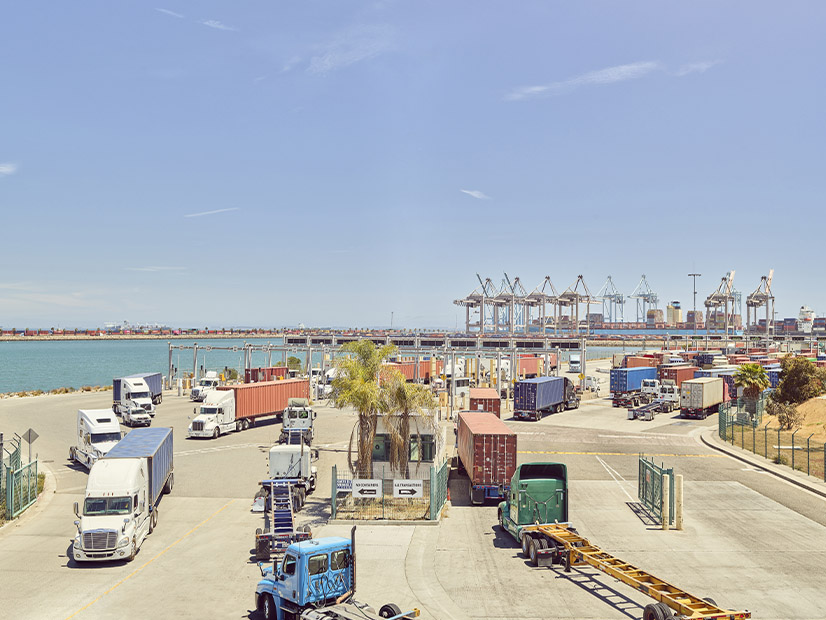
The agency approved a $624 million clean transportation incentive funding package but said goodbye to a flagship program that helped consumers buy zero-emission vehicles.
California regulators approved a $624 million clean transportation incentive funding package on Thursday but said goodbye to a flagship program that helped consumers in the state buy more than 500,000 zero-emission or hybrid light-duty vehicles.
The California Air Resources Board (CARB) approved a funding plan for 2023/24 that includes $455 million in incentives for zero-emission drayage trucks and school buses.
Another $28 million will go to the Clean Cars 4 All program, which pays lower-income consumers to scrap their old cars and buy a cleaner vehicle. An e-bike incentive program will receive $18 million, and $14 million will go to the Clean Off-Road Equipment incentive program.
But the plan does not include money for the Clean Vehicle Rebate Project (CVRP), which has received $1.61 billion since its launch in 2010 and provided incentives for the purchase of about 533,000 vehicles.
CVRP ran out of money and closed to new applications effective Nov. 8. The program offered incentives of up to $7,500 for the purchase of new battery-electric, plug-in hybrid and fuel cell vehicles. The program included income caps, but they were less restrictive than those of Clean Cars 4 All.
Stephanie Parent with CARB’s Mobile Source Control Division said CVRP had been “a huge success story.”
“CVRP achieved its goal of accelerating the deployment of ZEVs in California and provided highly useful ZEV market information to stakeholders in California and beyond,” Parent told the CARB board on Thursday.
According to the California Energy Commission’s ZEV dashboard, 1.7 million light-duty ZEVs have been sold in California. So far this year, ZEVs accounted for 25% of new car sales.
Rather than providing purchase incentives for the broader ZEV market, CARB will now shift its focus to lower-income consumers through its Clean Cars 4 All and finance assistance programs.
Smaller Package
The $624 million incentive package that CARB approved on Thursday is substantially smaller than the $2.6 billion approved last year for 2022/23. That was the agency’s largest budget yet for the incentives. (See CARB Approves $2.6B in Clean Vehicle Incentives.)
The current package includes $455 million in incentives for zero-emission heavy-duty vehicles: $80 million for drayage trucks and $375 million for public school buses. Those incentives will be available through the Hybrid and Zero-Emission Truck and Bus Voucher Incentive Project (HVIP).
The drayage truck incentives will help fleets meet the requirements of CARB’s Advanced Clean Fleets (ACF) regulation adopted in April. Under ACF, all new trucks added to drayage fleets must be zero-emission starting in 2024, and all drayage trucks must be ZEVs by 2035. (See CARB Adopts Clean Fleets Rule Despite Broad Skepticism.)
The state budget didn’t give CARB funding for other types of heavy-duty vehicles that are eligible for HVIP incentives. But HVIP received $1.8 billion in the 2022/23 funding plan, and the program reports that incentives are still available.
On the light-duty side, the $28 million going to Clean Cars 4 All will be split into two parts. Half will go to air districts that have been administering the program since its launch. The other half will go to a new statewide expansion of the program.
CARB’s incentive funding plan also includes the addition of zero-emission motorcycles (ZEMs) as an eligible vehicle in Clean Cars 4 All. Incentives for ZEMs were previously only available through CVRP.
The Tesla Effect
CVRP received a $515 million allocation for 2021/22 that was intended to fund the project through June 2024. But earlier this year, CARB estimated the project would run out of money as soon as October of this year.
That’s because Tesla in February reduced the price of two of its models — Model 3 and Model Y — making them again eligible for the CVRP incentive after losing eligibility in 2022. Starting in March, CVRP applications surged to about 12,000 per month. (See California EV Rebate Program Expected to Run Empty Ahead of Plan.)
Following the board’s approval of the incentive funding package on Thursday, CARB Executive Officer Steven Cliff read a resolution expressing appreciation to the Center for Sustainable Energy, which ran the CVRP program for nearly 14 years.
